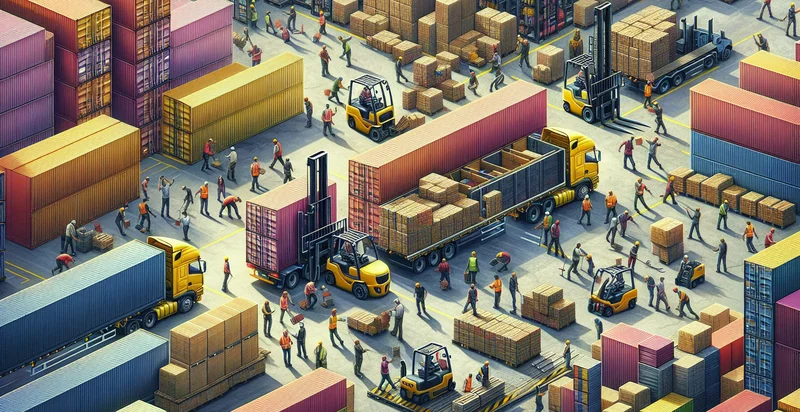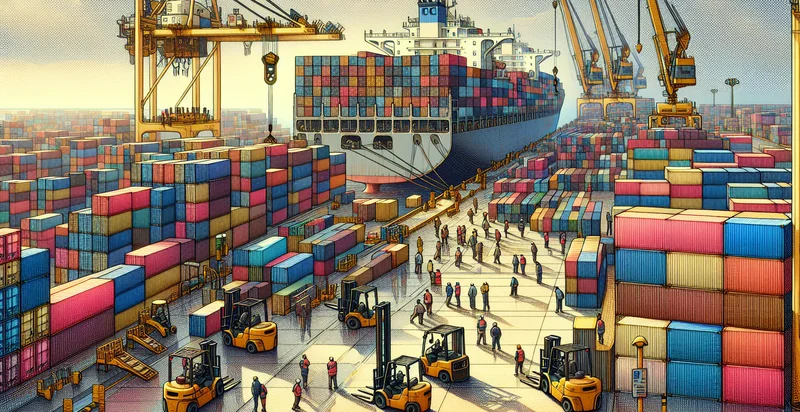Identify unloading locations
using AI
Below is a free classifier to identify unloading locations. Just upload your image, and our AI will predict the most probable unloading location based on the provided images - in just seconds.

Contact us for API access
Or, use Nyckel to build highly-accurate custom classifiers in just minutes. No PhD required.
Get started
import nyckel
credentials = nyckel.Credentials("YOUR_CLIENT_ID", "YOUR_CLIENT_SECRET")
nyckel.invoke("unloading-locations", "your_image_url", credentials)
fetch('https://www.nyckel.com/v1/functions/unloading-locations/invoke', {
method: 'POST',
headers: {
'Authorization': 'Bearer ' + 'YOUR_BEARER_TOKEN',
'Content-Type': 'application/json',
},
body: JSON.stringify(
{"data": "your_image_url"}
)
})
.then(response => response.json())
.then(data => console.log(data));
curl -X POST \
-H "Content-Type: application/json" \
-H "Authorization: Bearer YOUR_BEARER_TOKEN" \
-d '{"data": "your_image_url"}' \
https://www.nyckel.com/v1/functions/unloading-locations/invoke
How this classifier works
To start, upload your image. Our AI tool will then predict the most probable unloading location based on the provided images.
This pretrained image model uses a Nyckel-created dataset and has 16 labels, including Bulk Storage Area, Cargo Facility, Construction Site, Distribution Center, Drayage Yard, Freight Depot, Import/Export Hub, Industrial Yard, Loading Dock and Logistics Center.
We'll also show a confidence score (the higher the number, the more confident the AI model is around the most probable unloading location based on the provided images).
Whether you're just curious or building unloading locations detection into your application, we hope our classifier proves helpful.
Related Classifiers
Need to identify unloading locations at scale?
Get API or Zapier access to this classifier for free. It's perfect for:
- Logistics Optimization: By identifying unloading locations through false image classification, logistics companies can streamline their delivery routes. This helps in ensuring that drivers are aware of the best locations for unloading, reducing time spent searching for appropriate sites and improving overall operational efficiency.
- Warehouse Management: Warehouses can utilize the unloading locations identifier to optimize space allocation and inventory management. By accurately identifying where products are unloaded, warehouse managers can better arrange their layouts and enhance their overall workflow.
- Automated Inventory Tracking: Integrating the unloading location identifier with inventory management systems allows for real-time updates on stock levels. This ensures that inventory counts are accurate and up-to-date, minimizing the risk of stockouts or overstock situations.
- Supply Chain Analysis: Companies can analyze the data from unloading locations to improve supply chain decisions. By understanding unloading patterns, businesses can identify bottlenecks or inefficiencies and make strategic adjustments to enhance their supply chain performance.
- Safety Compliance Monitoring: Industries that require unloading goods must adhere to safety regulations. The unloading locations identifier can help monitor compliance with these regulations by ensuring that all unloading occurs in designated safe areas, reducing the risk of accidents.
- Real-Time Delivery Tracking: Customers can benefit from enhanced delivery tracking services that utilize the unloading locations identifier. This technology can provide customers with accurate updates on when their goods will be offloaded, improving transparency and satisfaction.
- Cost Reduction Strategies: By analyzing data from unloading locations, businesses can identify areas for cost-saving measures. For instance, they can determine if certain unloading sites incur higher fees or if re-routing deliveries to more efficient sites would reduce expenses, ultimately saving money in logistics operations.


